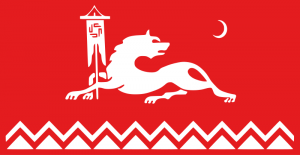Language/Avaric/Grammar/How-to-Use-Have
Hi Avaric learners! 😊
In this lesson, you will learn how to use the verb "have" in Avaric.
The Verb "Have"
The verb "have" in Avaric is translated as "ара" (ara). This verb is used to indicate possession, relationships, and actions that occurred in the past. Understanding how to use "have" correctly is important for speaking and writing Avaric fluently.
Possession
To indicate that something belongs to someone in Avaric, we use the verb "ara" with the subject followed by the noun that represents the possession. In Avaric, it is necessary to add a possessive marker at the end of each noun to indicate possession.
For example:
| Avaric | Pronunciation | English | |||||||||||||||
|---|---|---|---|---|---|---|---|---|---|---|---|---|---|---|---|---|---|
| мина ара | mina ara | I have | сина ара | sina ara | you have | уӀина ара | ulina ara | he/she/it has | кина ара | kina ara | we have | дина ара | dina ara | you (plural) have | ина ара | ina ara | they have |
In the example above, notice that the possessive marker "а" (a) is added at the end of each subject pronoun to indicate possession.
Dialogue:
- Person 1: мина ара кӀор? (Mina ara k'or?) - Do I have a house?
- Person 2: ау, мина ара кӀор. (Au, mina ara k'or.) - Yes, you have a house.
Translation:
- Person 1: Do I have a house?
- Person 2: Yes, you have a house.
Relationships
The verb "ara" is also used to indicate relationships between people or things. In order to express these relationships, it is necessary to use the subject marker, the verb "ara" followed by the noun.
For example:
| Avaric | Pronunciation | English | ||||||||||||||||||
|---|---|---|---|---|---|---|---|---|---|---|---|---|---|---|---|---|---|---|---|---|
| дедаи ара | dedai ara | grandparent has | мат ара | mat ara | mother has | дад ара | dad ara | father has | хьай ара | x'ai ara | sister has | бер ара | ber ara | brother has | хол ара | xol ara | son has | дов ара | dov ara | daughter has |
In the example above, notice how we use the verb "ara" in combination with the names of family members to indicate relationships.
Dialogue:
- Person 1: мат ара кӀилла? (Mat ara k'illa?) - Does your mother have a car?
- Person 2: ау, мат ара кӀилла. (Au, mat ara k'illa.) - Yes, my mother has a car.
Translation:
- Person 1: Does your mother have a car?
- Person 2: Yes, my mother has a car.
Past actions
The verb "ara" is also used to indicate actions that occurred in the past. In this case, it is necessary to use the past tense of the verb "ara" in combination with the subject marker and the main verb in the past tense.
For example:
| Avaric | Pronunciation | English | ||||||
|---|---|---|---|---|---|---|---|---|
| мина ӏела айг ару ара | mina ghela ajg aru ara | I had eaten | сина кӀела гат ару ара | sina k'ela gat aru ara | you had spoken | ина кӀела бӏо ару ара | ina k'ela bho aru ara | they had lived |
In the example above, notice how we use the past tense of "ara" in combination with the past tense of the main verb to indicate past actions.
Dialogue:
- Person 1: кӀина кӏел ару ара? (K'ina k'el aru ara?) - Had you eaten?
- Person 2: ау, кӀина кӏела ару ара. (Au, k'ina k'ela aru ara.) - Yes, I had eaten.
Translation:
- Person 1: Had you eaten?
- Person 2: Yes, I had eaten.
Now that you have learned how to use the verb "ara", try creating some phrases and sentences using it. Don't be afraid to make mistakes, and remember that practice is key to mastering any language! To improve your Avaric Grammar, you can also use the Polyglot Club website. Find native speakers and ask them any questions!
➡ If you have any questions, please ask them in the comments section below.
➡ Feel free to edit this wiki page if you think it can be improved. 😎
Related Lessons
- Negation
- Pronouns
- Adjectives
- Future Tense
- Plurals
- Conditional Mood
- Give your Opinion
- How to Use Be
- Questions

